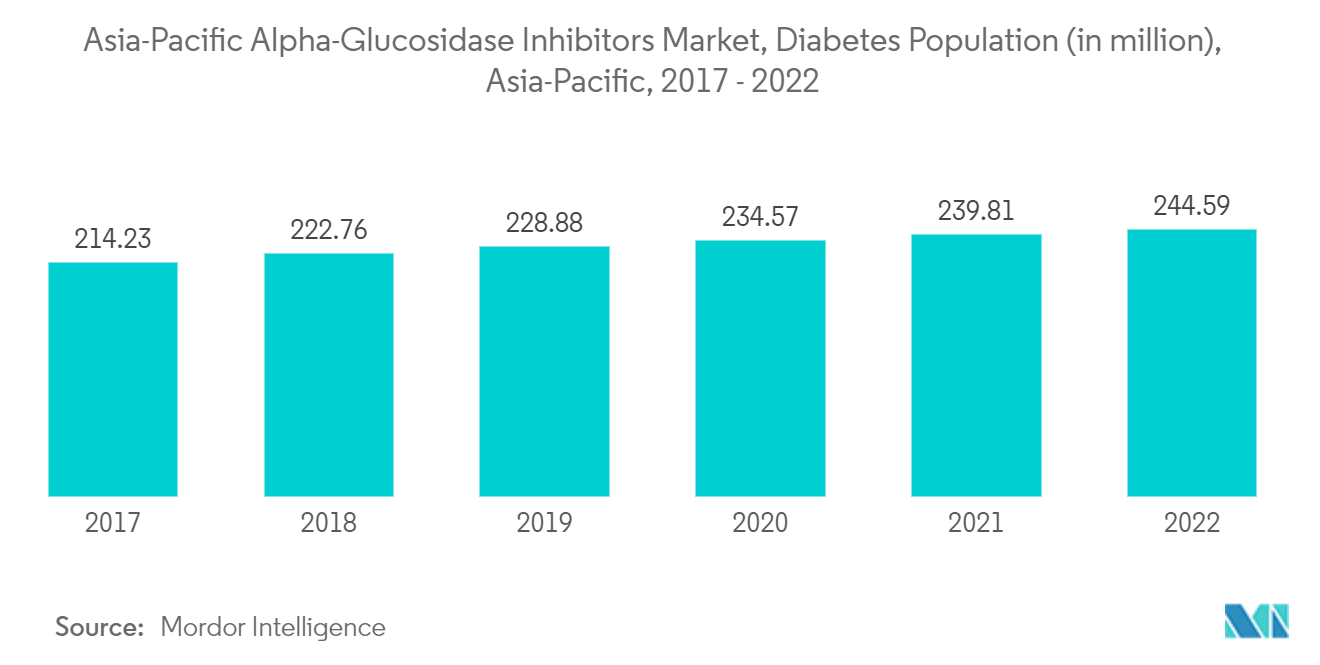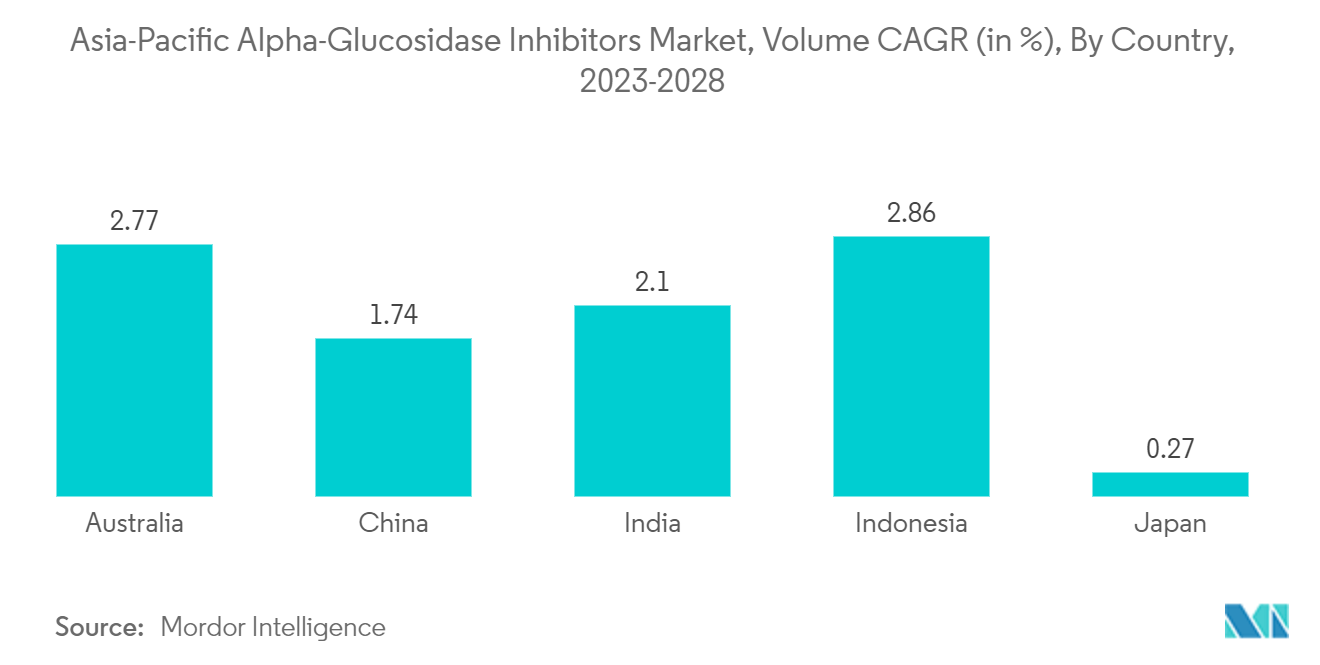Market Trends of Asia-Pacific Alpha-Glucosidase Inhibitors Industry
Rising Diabetes Prevalence in Asia-Pacific Region
Diabetes prevalence increased alarmingly in the Asia-Pacific region in recent years. Diabetes is at an all-time high in developing countries such as China and India. By monitoring their blood glucose levels, patients with diabetes require several adjustments throughout the day to maintain normal blood glucose levels, such as oral anti-diabetic medicine or the absorption of extra carbs.
Because of the growing diabetic population in the Asia-Pacific region, China is identified as a potential developing market. China is a mature market with associated challenges, such as slow economic growth, an aging population, and increased competition. There is a growing preference for oral anti-diabetics among type 2 diabetic patients in this region, driving the market's growth under consideration. China includes the largest market share and contributes considerably to the global diabetes medicine market. The country is seeing a considerable surge in generic medicine producers.
Furthermore, the market's main global firms are encountering fierce rivalry from regional competitors. In the current year, according to Diabetes Australia, 'The Australian health system spends USD 2.5 billion per annum directly on diabetes'. On top of this, diabetes is a leading cause of heart disease, which costs the health system more than USD 2 billion per annum. There is also chronic kidney disease, which costs USD 1.7 billion, and stroke, which costs USD 660 million.

China is Expected to Dominate the Asia-Pacific Alpha-Glucosidase Inhibitors Market.
The alpha-glucosidase inhibitors (acarbose, miglitol, and voglibose) are extensively studied in China. They inhibit upper gastrointestinal enzymes (alpha-glucosidases) that convert complex polysaccharide carbohydrates into monosaccharides in a dose-dependent manner when taken orally. As a result, these drugs slow dietary carbohydrate absorption. The slower rise in postprandial blood glucose concentrations may benefit both type 1 and type 2 diabetes. Acarbose may also increase insulin sensitivity in older patients with type 2 diabetes, though this may be a nonspecific effect associated with improved glycemia. When used alone or combined with other agents that do not cause hypoglycemia, alpha-glucosidase inhibitors do not cause hypoglycemia. AGIs improve the metabolic profile and potentially lower the risk of long-term hyperglycemia complications in patients with type 2 diabetes mellitus. They can be used alone or with other antihyperglycemic medications and insulin. There are no links to any serious negative consequences. It makes them especially useful for patients with renal, cardiorespiratory, or liver issues, who are at a higher risk of developing lactic acidosis and thus are not good candidates for metformin therapy. They also do not cause hypoglycemia, making them a viable alternative to sulfonylureas, which are frequently associated with hypoglycemia. Patients should be counselled on maintaining an appropriate diet, as a high carbohydrate diet can exacerbate gastrointestinal side effects.
The market is expected to grow during the forecast period due to the factors above.


